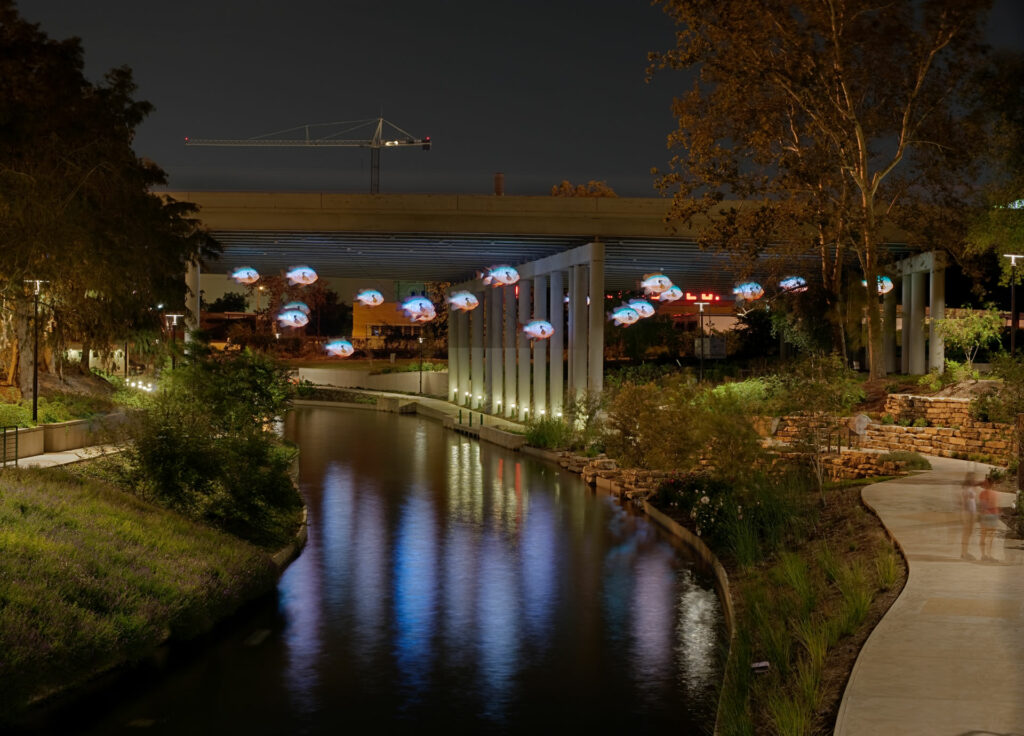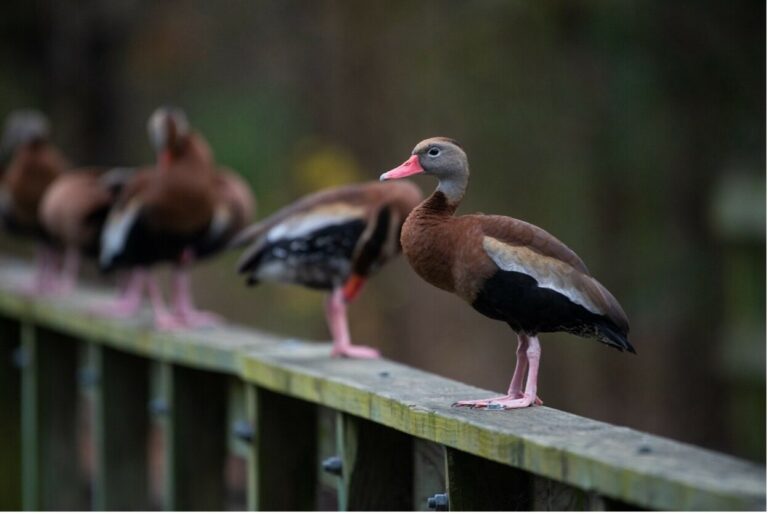Public Art by Donald Lipski
From the urban environment at its headwaters to wild, rural stretches, there are numerous locations along the 240 miles of the San Antonio River that can provide the perfect setting for fishing. Thanks to the San Antonio River Improvements Project, which resulted in the expansion of the San Antonio River Walk and the restoration of natural habitats and river features along the Mission Reach, fishing enthusiasts now have many excellent, quiet locations along the riverbank to choose from. This post highlights an important, native species you might encounter on your next fishing trip along the San Antonio River.
The Longear Sunfish(Lepomis megalotis)
Among the numerous native species of fish in the San Antonio River is the longear sunfish, also known as the cherry bream. This unique-looking fish has numerous fascinating characteristics outside of its vibrant orange and turquoise coloration, and unique elongated earlobe-like flaps. When the time is right, usually during the warmer months, males will create nests and don their spawning colors to invite females to lay eggs in them.
Longear sunfish females lay a surprising number of eggs; anywhere between 140 to 2,800 eggs in a cycle. Males will continue to keep the eggs free of debris by fanning them with their fins while also guarding the eggs from predators. As vigorous defenders, males will continue to guard over the nests for nearly a week.
Growing to an average length of 6 inches, the longear sunfish is both prey and predator in the ecosystem and can be found hiding in aquatic vegetation or undercut banks. A carnivore, this fish’s large eyes equip it with improved ability to see prey items such as aquatic insects, small fish, and fish eggs.
For more information on this fascinating fish, as well as species-unique fishing tips, head to this Texas Parks and Wildlife Department webpage.
A Swimming Tribute
For those of us who don’t count fishing among our pastimes, there is another unique opportunity to get up close with the longear sunfish, in fact, a whole school of them!
Located under the I-35 overpass that crosses the Museum Reach section of the San Antonio River Walk, Donald Lipski’s public art installation F.I.S.H features 25 giant hand-painted fiberglass resin models of the longear sunfish. The attention to detail and anatomical correctness in these models provides a great opportunity to enjoy the unique beauty of this native species.
How can I help this native species thrive?
It is important to note that the longear sunfish is sensitive to poor water quality conditions, especially turbid, or murky, waters. Land use changes that bring about more impervious, hard surfaces as well as habitat degradation can increase erosion and sediment introduced to the river, resulting in increased turbidity. Green Infrastructure practices such as rain gardens and bioswales, designed to keep rainfall on the properties it falls on as nature intended, can go a long way in preventing increased erosion and turbidity.
When we connect with the longear sunfish or any other wildlife of the San Antonio River, it is important to keep in mind that they rely on us to stay healthy and flourish so they can continue their important role in nature’s checks and balances.






